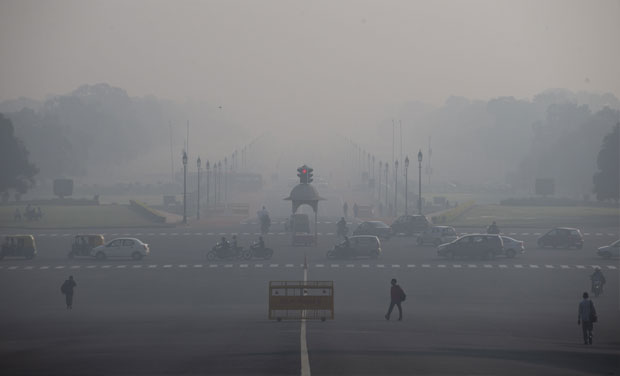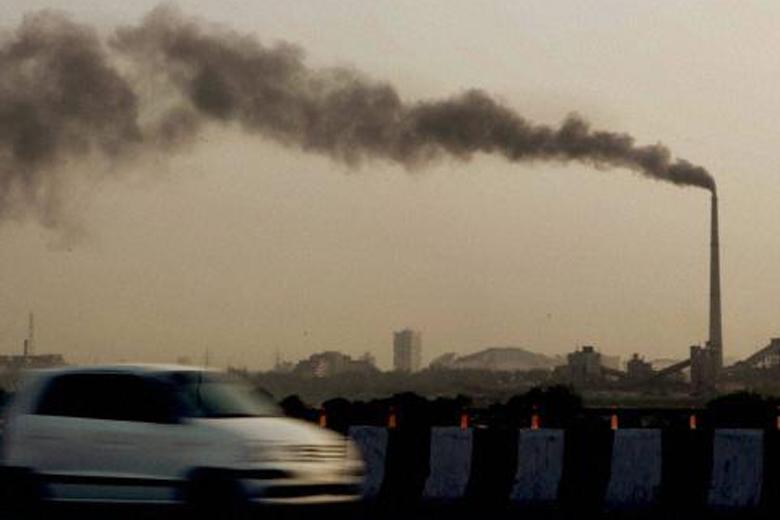What Are Exoplanets And How NASA Detects Life Beyond Our Solar System
Bharti Airtel Set To Acquire Telenor India Within This Year
Google Celebrates NASA’s Discovery Of Seven Earth-Like Planets With An Animated Doodle
Some Home Remedies That Might Sound Bizarre But Actually Work Like A Charm
Akshay Kumar Feels He Has Made Enough Money, Now Wants To Focus On Content & Characters
Delhi ATM Dispenses Fake Rs 2000 Notes From ‘Childrens Bank of India’ With ‘Churan Lable’
Adolf Hitler’s Personal Telephone During World War II Is Up For Auction In The US
From Salman Khan To Rekha, Neil Nitin Mukesh’s Wedding Reception Was Quite A Starry Affair
Delhiites Are Dying 6.3 Years Earlier Than They Used To This New Study Tells You Why
If you are a Delhi-dweller, we have some bad news for you. According to a recent study, in Delhi, life is cut short by 6.3 years due to pollution. Based on data compiled using the 2011 census, the study states that the reduction in life expectancy is due to exposure to fine particulate matter and ozone in the atmosphere. The study, titled 'Premature Mortality In India Due To PM2.5 And Ozone Exposure In India' was conducted by the Indian Institute of Tropical Meteorology, in collaboration with National Center for Atmospheric Research (Colorado, USA ) along with Atmospheric Chemistry Observations and Modeling. Published in the peer review journal, Geophysical Research Letters, the study states the following basic points: In India, overall, exposure to fine particulate matter reduces life expectancy by 3.5 years. (3.3 is the national average of reduction in life expectancy) In the capital, Delhi, life expectancy reduces by 6.4 years due to exposure to PM 2.5, the highest in the country. In Maharashtra, life expectancy drops by 3.3 years because of pollution-exposure. In Uttar Pradesh, 15% of the country's deaths occur due to pollution, and 10% in Maharashtra. West Bengal and Bihar follow with 9% and 8% deaths due to PM2.5 exposure, respectively. Other states with high mortality rates due to PM2.5 exposure include Tamil Nadu, Andhra Pradesh, Karnataka, Gujarat, Madhya Pradesh, Rajasthan and Orissa, accounting for 32% of premature deaths. Excessive exposure to Ozone (O3) pollution also causes 19% of the country's total deaths in Uttar Pradesh, 11 % in Bihar, 9.5 % in West Bengal and 7% in Maharasthra. In 2011, 5.7 lakh premature deaths occurred due to PM2.5 exposure while 12,000 people died prematurely due to exposure to Ozone. Exposure to PM2.5 and ozone has caused the loss of $640 million to India due to premature mortalities. PM2.5, emitted mostly by vehicles, is the leading contributor to pulmonary diseases in India.
“We found the cost of the estimated premature moralities came to about $640 billion in 2011 — about 10 times the country’s total expenditure on health in 2011,†one of the co-authors, Dr. Sachin Ghude, said.
Research on premature mortality is fairly new in India, though other countries have previously conducted such studies. The team of researchers and scientists at IITM had a tough time conducting the study, since no previous parameters for such a study existed.
We don’t have any epidemiological studies in India that look at the long-term effects of air pollution on mortality. In this work, we have extrapolated human responses to high pollution levels using results from less polluted places. However, it is the only available option for this type of research until the studies are conducted in India,†he added.

Conducted using the 'value of statistical life' approach, and data was extrapolated from India's population figures as per the census, as well as figures of pollution released by global institutions such as World Health Organisation and Burden of Disease.
The 'value of statistical life' can be seen as the monetary value depicting a change in the likelihood of a person's death. Alternatively, it may also represent the amount of money that a society would be willing to pay to protect the life of an individual citizen.
Most observational studies on the topic have been conducted by or in countries with lower levels of pollution. Due to the lack of studies conducted in India, Dr. Ghude says:
Although, these results are in line with other global estimates such as WHO and GBD, there is no physical way to tell who has actually been killed because of pollution.'





